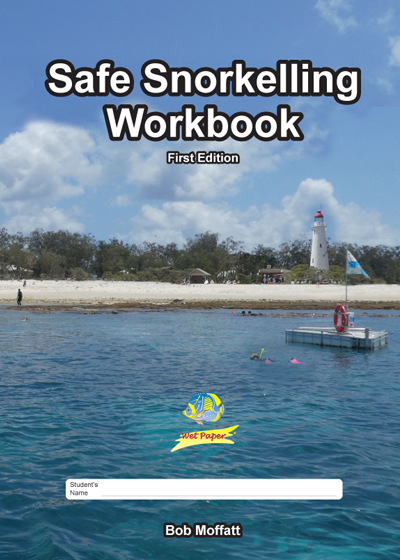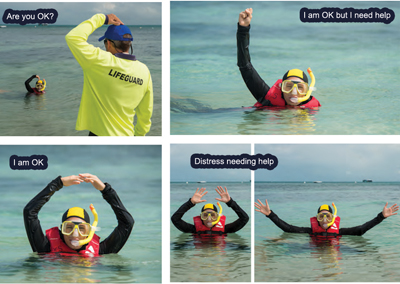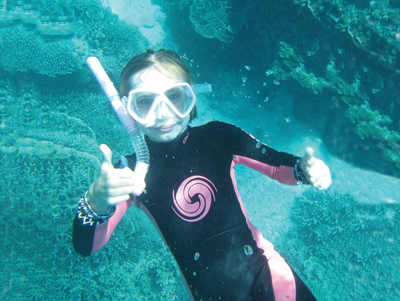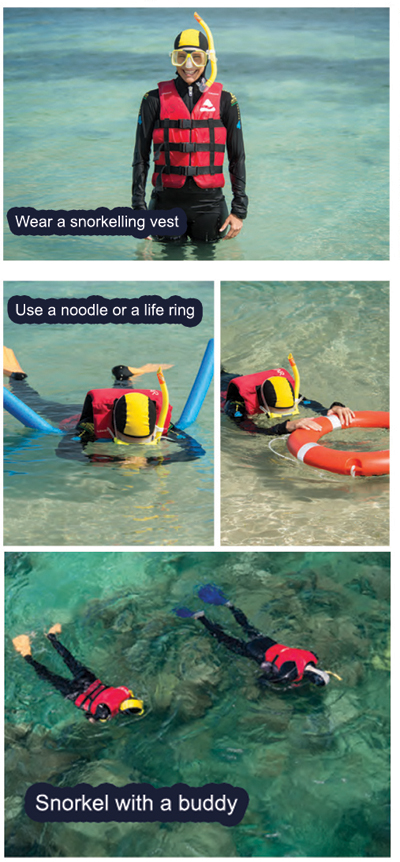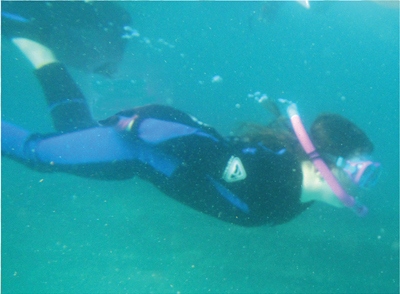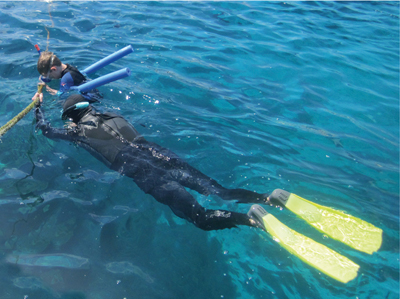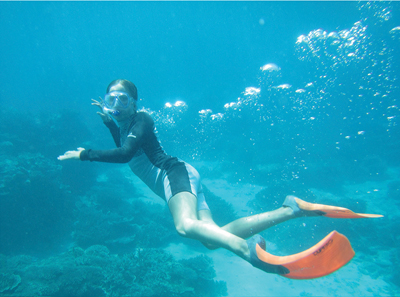Safe snorkelling workbook HARD COPY

ISBN : 978-1-86283-176-6
Published Date : 16 April 2022
Product Code : W 102
Format : 68 page mono, wire bound A4 HARD COPY workbook
Price: $16.00
On Sale: $0.00
IMPORTANT: THIS PRODUCT ONLY AVAILABLE TO AUSTRALIAN CUSTOMERS
Safe snorkelling workbook HARD COPY
By Bob Moffatt
Wet Paper Publications
Answer Ebook Available now
$77 - lifetime, pay only once, pdf file of answers
Because it's not in colour and it's a hard copy - it's called the first edition. The second edition is an EBOOK ONLY and my photos and illustrations are in colour - so I had to call it a second edition.
Workbook
Sample pages
Click here to download low resolution sample pages
Workbook final outcomes
Here are the 140 plus outcomes that I've used to write the workbook. You are free to copy and adapt these to adapt to your State Syllabus and create your own lessons.
For example the new 2024 Queensland Aquatics Syllabus introduces
Execute for:
Safe use of snorkelling equipment
Archimedes principle
Procedures to deal with snorkelling injuries and emergencies
Safety measures in aquatic contexts e.g. reefs, coastlines
Or Plan for:
- risk management
- management of risks and hazards which exist in the marine environment
So Queensland teachers substitute execute for demonstrate , or plan a family snorkelling say execute a family trip.
Click here to get a pdf of the objectives.
Section 1: Equipment
A. List advice you could get when buying equipment
B. List types of snorkelling equipment you can buy including masks, snorkels, fins, PPE, underwater cameras, spear fishing gear and for each:
1. Describe how each piece helps you snorkel.
2. Distinguish between types and materials used in each.
3. List advantages and disadvantages of each item purchased.
4. Describe equipment care and maintenance of each item.
C. Evaluate shark deterrent devices
D. Experiment with snorkelling PPE materials to determine equipment care
Section 2: Skills
A. Describe how to fit a mask. snorkel and fins
B. Discuss water entries and exits
C. Describe finning and diving techniques
D. Describe clearing your snorkel, mask and preventing fogging up
E. Describe how to ditch a weigh belt
F. Identify safety signals
G. Discuss rescue methods
H. Design a snorkelling certificate incorporating:
1. Fitness distance swim, underwater swim and treading water
2. Fitting a mask, snorkel and fins
3. Water entries and exits
4. Finning the length of a pool
5. Duck dive, clearing your snorkel and ears
6. Clearing a mask and how to stop it fogging up
7. Safety signals
8. Drills used in rescue methods
Section 3: Personal health risks
A. Define and give examples of a:
1. Health risk
2. Hazard
3. Preventative measure
B. Use a table to determine a risk level
C. Explain the importance of situation awareness
D. Describe hazards and preventative measures associated with:
1. Skin trauma, including:
a. Sunburn
b. Melanoma
2. Heat gain, including:
a. Hyperthermia
b. Cramps
c. Heat exhaustion
d. Heat stroke
3. Heat loss, including:
a. Shivering
b. Sudden temperature change
c. Hypothermia
4. Cramps
5. Eye trauma
6. Ear trauma, including:
a. Outer ear infections
b. Middle ear infections
c. Blocked ears
7. Ear barotrauma
8. Sinus barotrauma
9. Seasickness
10. Underlying health conditions including:
a. Diabetes
b. Asthma and allergies
c. Epilepsy
d. Nervousness
11. Drowning, including
a. Panic
b. Saltwater mist
12. Stupidity, including:
a. Definition
b. Hyperventilation
c. Shallow water blackout
d. Not signing forms
Section 4: Environmental hazards
A. Define and give examples of an environmental:
1. Risk
2. Hazard
3. Preventative measure
B. Explain how a risk level can change, using a snorkelling platform as an example.
C. Describe hazards and preventative measures associated with:
1. Boat operators
2. Weather, including:
a. Waves
b. Wind
c. Rain
3. Heat
4. Turbidity
5. Currents (strength and direction)
6. Entry and exit points
7. Deep water and free diving
8. Sound
9. Dangerous marine creatures, including:
a. Sharks
b. Coral, oysters and barnacles
c. Stingrays
d. Sea urchins
e. Bristle worms
f. Blue-ringed octopus
g. Cone snails
h. Stonefish
i. Scorpion fish
j. Bluebottle
k. Box jelly and Irukandj
l. Fire weed and stinging hydroid
Section 5: Emergency planning
A. Evaluate snorkel trip planning by:
1. Determining a group’s ability to use equipment.
2. Inspecting proposed site entry/exit hazards.
3. Establishing emergency communication site locations.
4. Determining group member underlying medical conditions.
5. Interpreting weather maps and tide charts for alternative sites.
6. Preparing a water entry safety brief.
B. Snorkelling first aid
1. Describe how to stop and treat bleeding, including:
a. Coral cuts
b. Body lacerations
c. Bites from fish
d. Bleeding from the ear and nose
2. Distinguish between the treatment of tropical and non-tropical stings.
C. Describe emergency procedures including:
1. DRSABCD
a. Danger
b. Response
c. Send for help now
d. Airway
e. Breathing
f. Compression
g. Defibrillation (if available)
2. When to stop CPR.
3. Use of personal defibrillators.
4. How to control shock.
D. Demonstrate:
1. CPR to the recognised standard
2. The recovery position.
E. Search applicable government web sites for safety guidelines, for example:
1. National guidelines: www. australianaas.org.au
2. WA Education: www.education.wa.edu.au
3. NSW Education: https://app.education.nsw.gov.au
4. Queensland worksafe: www.worksafe.qld.gov.au
Section 6: Snorkelling science
A. Vision underwater
1. Complete a diagram to illustrate how the human eye functions.
2. Explain why marine life appears bigger underwater when using a mask.
3. Describe how the penetration of light frequencies changes with depth.
4. Compare how a mask focuses an image on the retina of the human eye with and without a mask.
B. Respiration and SWB
1. Define shallow water blackout.
2. Explain SWB given graphs comparing oxygen and carbon dioxide levels of dives with normal breathing and hyperventilation.
C. Buoyancy and snorkelling
1. Explain why we float.
2. Discuss the difference between positive, neutral and negative buoyancy.
D. Archimedes Principle
1. Recall Archimedes Principle and state the formula for calculating density.
2. Explain how you would predict if a object would float or sink.
3. Calculate the mass of water displaced by a snorkeller and the mass of a weight belt using a formula for density.
4. Estimate the apparent mass of an object when placed in water.
E. Effects of pressure
1. Define pressure.
2. Discuss the effect pressure has on our bodies when we dive underwater.
F. Boyle’s Law
1. Define Boyle’s law.
2. Describe an experiment used to prove it.
3. Discuss the relationship between pressure and volume when we dive underwater.
Teachers Information
Because its not in colour - it's called the first edition. Apart from that there is ABSOLUTELY NO difference.
Why study this workbook
To enjoy snorkelling as an adult
This is a workbook for high school students wishing to attain the physical fitness and ocean situation awareness skills necessary to snorkel with their family and friends after they leave school.
It is not a manual for snorkelling instructors, nor a guide for commercial operators who run snorkelling tours as part of their business.
To get a job where snorkelling is part of business operations
None the less, if you want to get a job as a snorkelling worker, this workbook addresses many of the issues commercial snorkelling operators face and may serve as a useful introduction of what you can expect from your prospective employer.
There are plenty of publications that describe these requirements and can usually be found on Government websites that assist with workplace health and safety issues. For example www.worksafe.qld.gov.au
To compete a unit of study as part of the school curriculum
Snorkelling is studied in schools in most Australian states and your teacher will have organised a course that matches the curriculum. This edition has been organised with the basics first, so if you are completing a marine science course, with a few pool sessions before your trip and snorkelling in a supervised tour, sections 1-3 may only apply. However if you want to work in the industry, the complete workbook gives you an insight into the course material you need to study.
Contents
There are six sections
Introduction
A. Why study this workbook
B. About the questions
Section 1: Equipment selection
A. Advice
1. Masks
2. Snorkels
3. Fins
4. Personal protection equipment.
5. Underwater cameras and housings
B. Evaluate shark deterrent devices
1. Shark biology
2. Shark bands
3. Shark shields
C. Spear fishing
D. Snorkelling PPE experiment
Worksheet 1: Equipment selection
Section 2: Snorkelling skills
A. Fitting your mask, snorkel and fins.
B. Water entries and exits
1. Entry
2. Exits
C. Finning and diving
1. Finning
2. Diving
D. Snorkel and mask clearing
E. Ditching a weight belt
F. Safety signals
G.Rescue methods.
Activity: Snorkelling certificate design
Worksheet 2: Skills knowledge
Section 3: Personal health risks
A. Definitions
1. Risk
2. Hazard
3. Preventative measure.
B. Determining levels of risk
1. Medium risk example - coral cut
2. High risk example - snorkelling platform
C. Situation awareness
Example - rips and currents
D. Hazards and preventative measures
1. Skin trauma
2. Hyperthermia
3. Heat loss
4. Cramps
5. Eye trauma
6. Ear trauma
7. Ear barotrauma
8. Sinus barotrauma
9. Seasickness
10. Underlying health conditions.
11. Drowning
12. Stupidity
Worksheet 3: Risks, hazards and prevention
Worksheet 4: Sunburn, heat gain and loss
Worksheet 5: Eyes, ears and sinuses
Worksheet 6: Underlying health conditions
Section 4: Environmental hazards
A. Definitions
B. Risk levels change
C. Hazards and preventative measures
1. Boats and their operators
2. Weather
3. Tides and currents (strength and direction)
4. Entry and exit points
5. Deep water free diving
6. Sound
7. Dangerous marine creatures
Worksheet 7: Environmental hazards
Section 5: Emergency planning
A: Evaluate snorkel trip planning
1. Determine ability to use equipment
2. Evaluate the proposed site for hazards
3. Evaluate emergency communication sites.
4. Evaluate groups medical conditions
5. Evaluate weather and tides for safety
6. Plan what to say in a safety brief
Worksheet 8: Emergency planning
B: Stop the bleed
1. Coral cuts
2. Lacerations
3. Bleeding from the ear and nose
4. Bleeding from big fish bites
C. Tropical and non-tropical stings
Worksheet 9: Snorkelling first aid
Worksheet 10: Dangerous marine creatures
D: Cardiopulmonary resuscitation
Worksheet 11: CPR
Section 6: Snorkelling science
A. Vision underwater
Worksheet 12: Your snorkelling eyes
B. Respiration and SWB
1. Oxygen
2. Normal dive
3. Dive with hyperventilation
Worksheet 13: Shallow water blackou
C. Buoyancy and snorkelling
Worksheet 14: Buoyancy and snorkelling
D. Archimedes principle
E. Effects of pressure
F. Boyle’s law
Section 7: Project ideas
1. Boyle’s law experiment
2. Make a Cartesian diver
3. Research life on a reef
4. Spear fishing
5. Ecotourism tour evaluation
6. Analyse shark PPE
7. Make an instructional video
8. Research PPE
9. Working in the industry
10. Prepare a snorkelling weekend camp
11. Lung capacity experiment
12. Medical declaration


